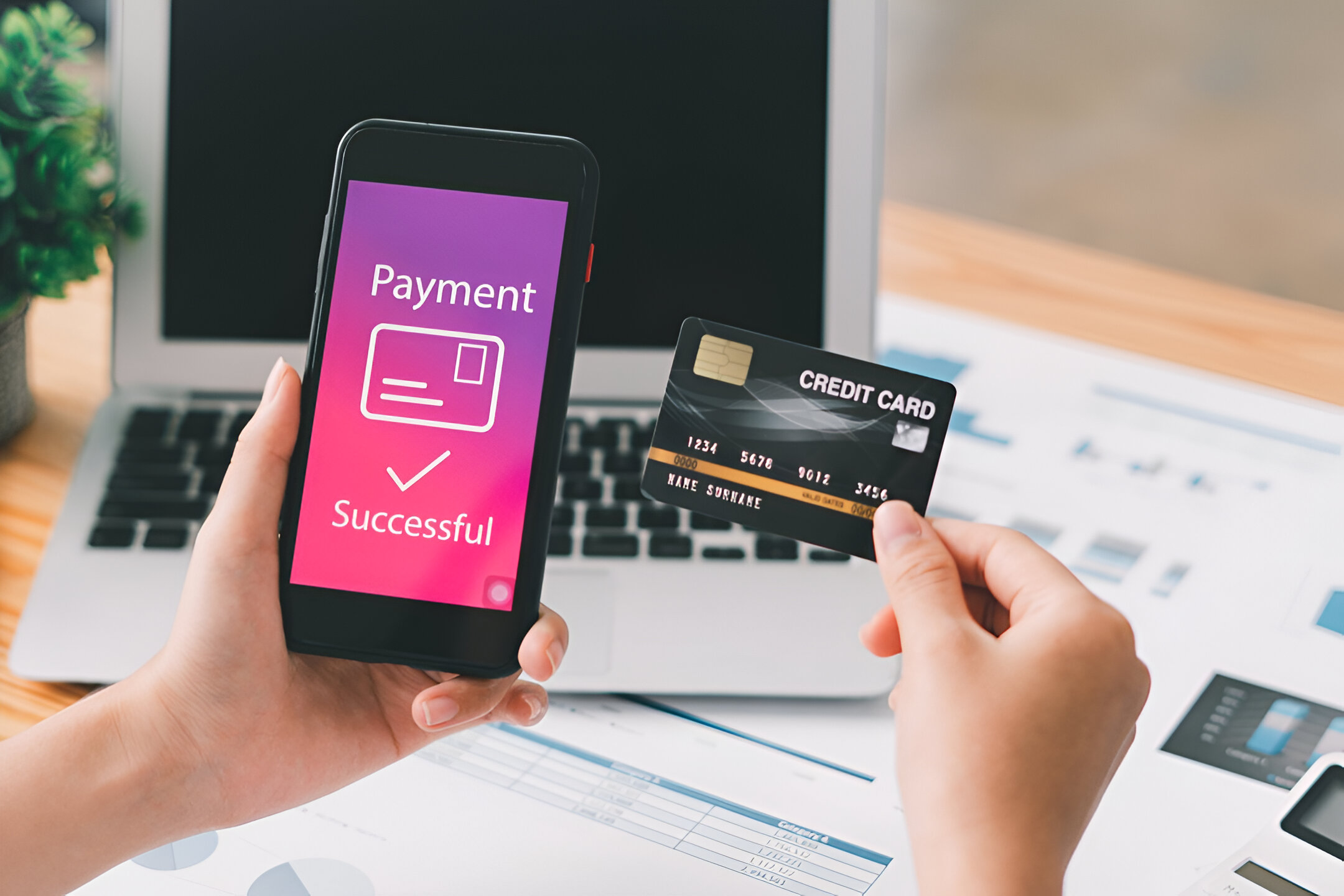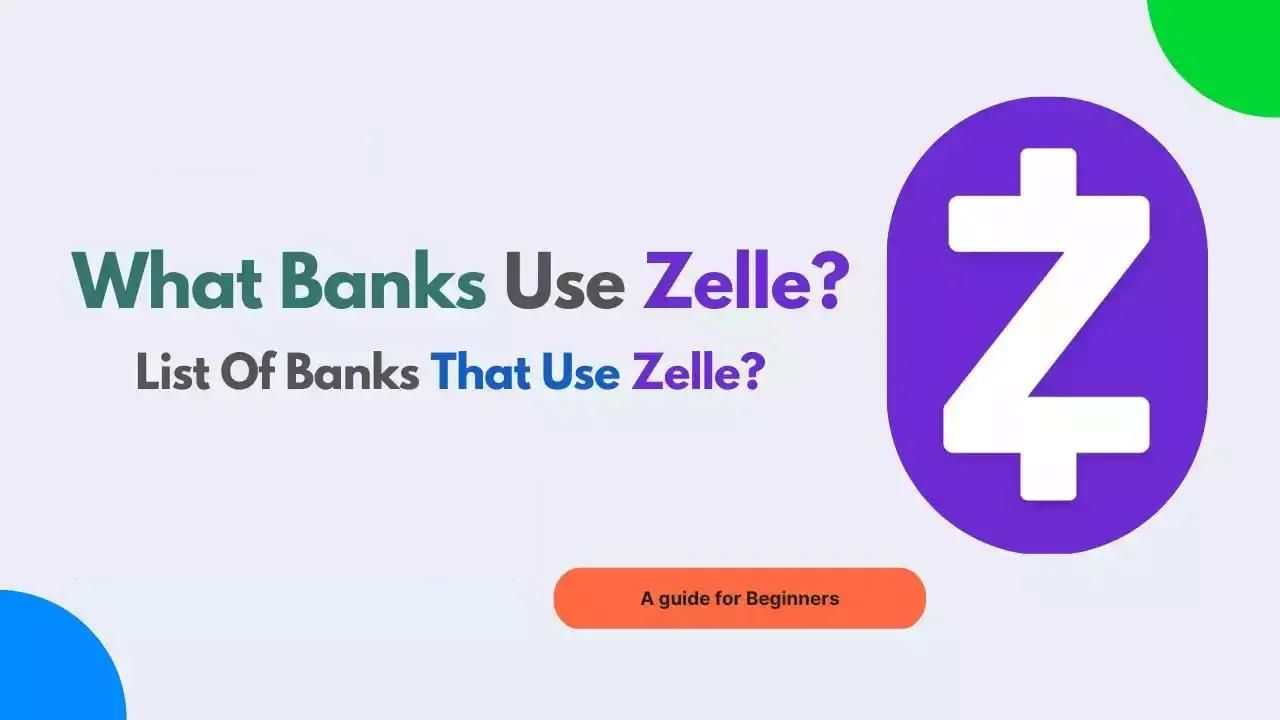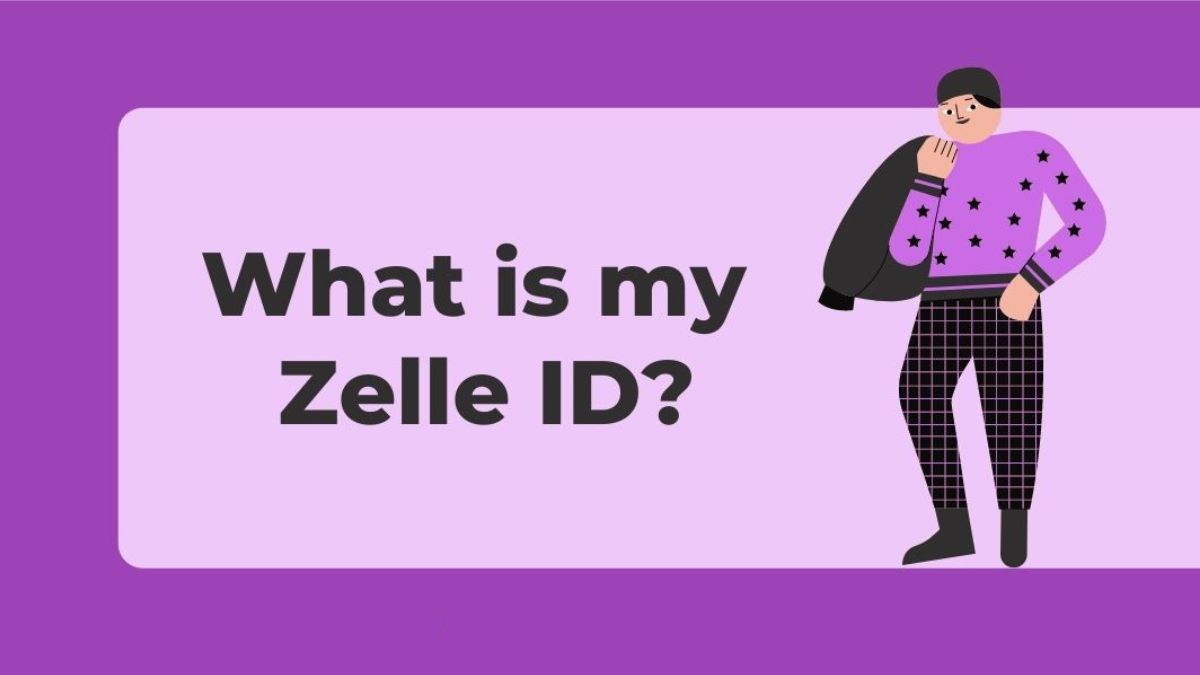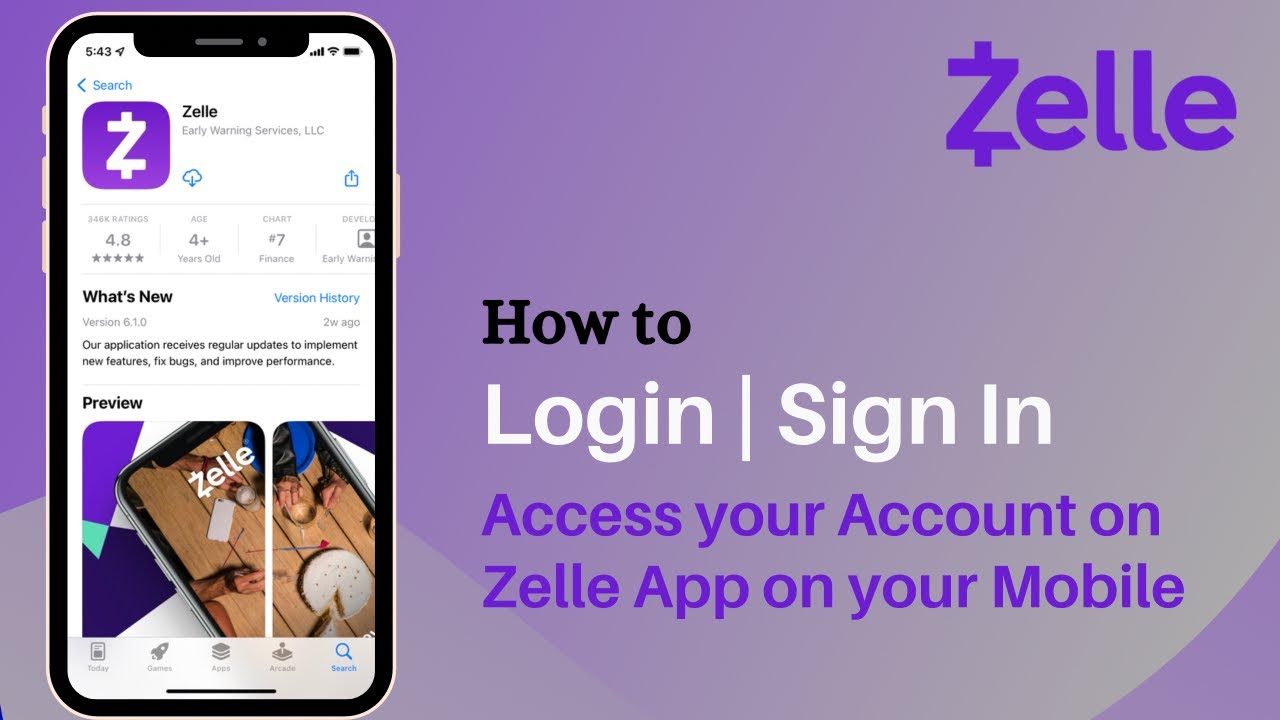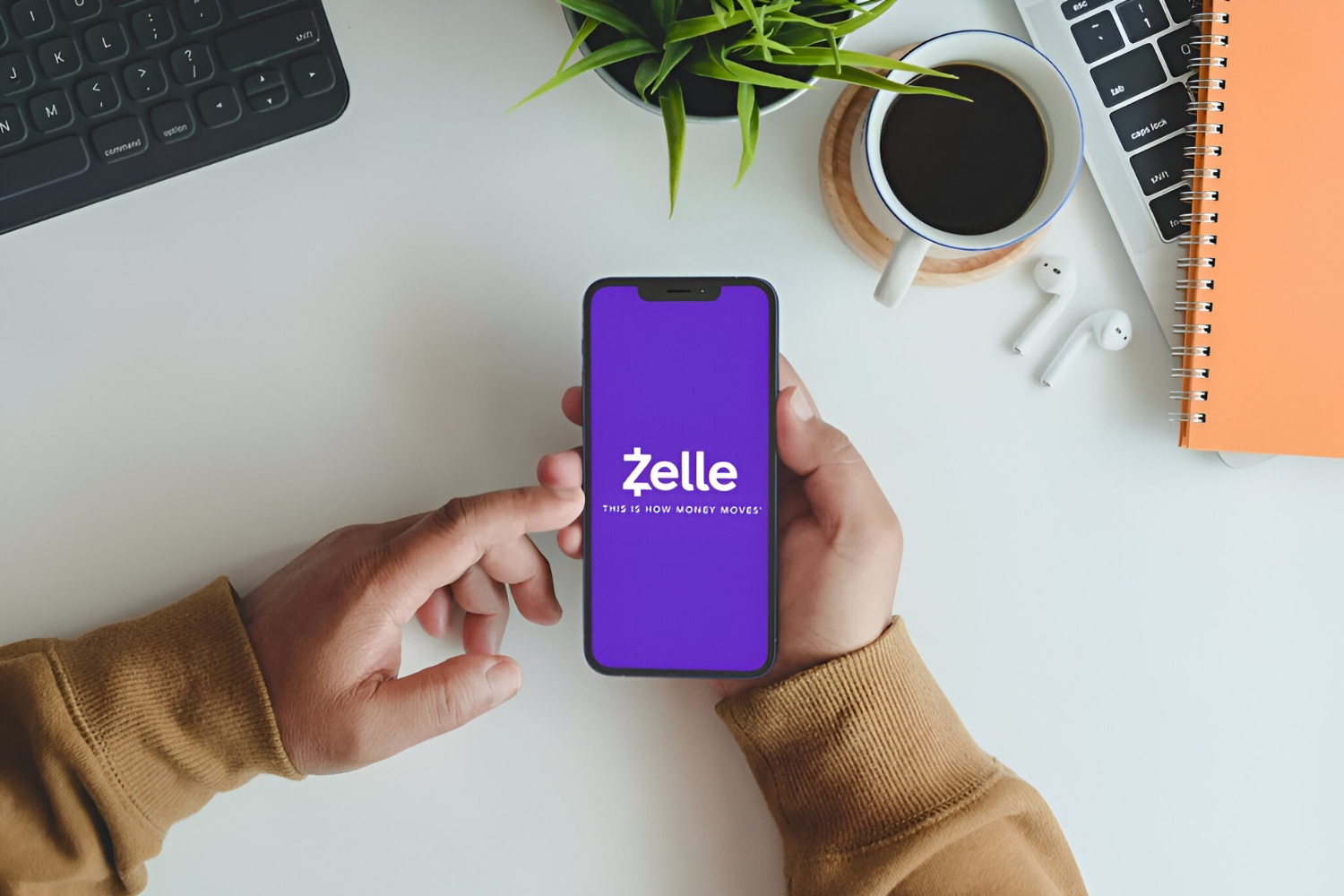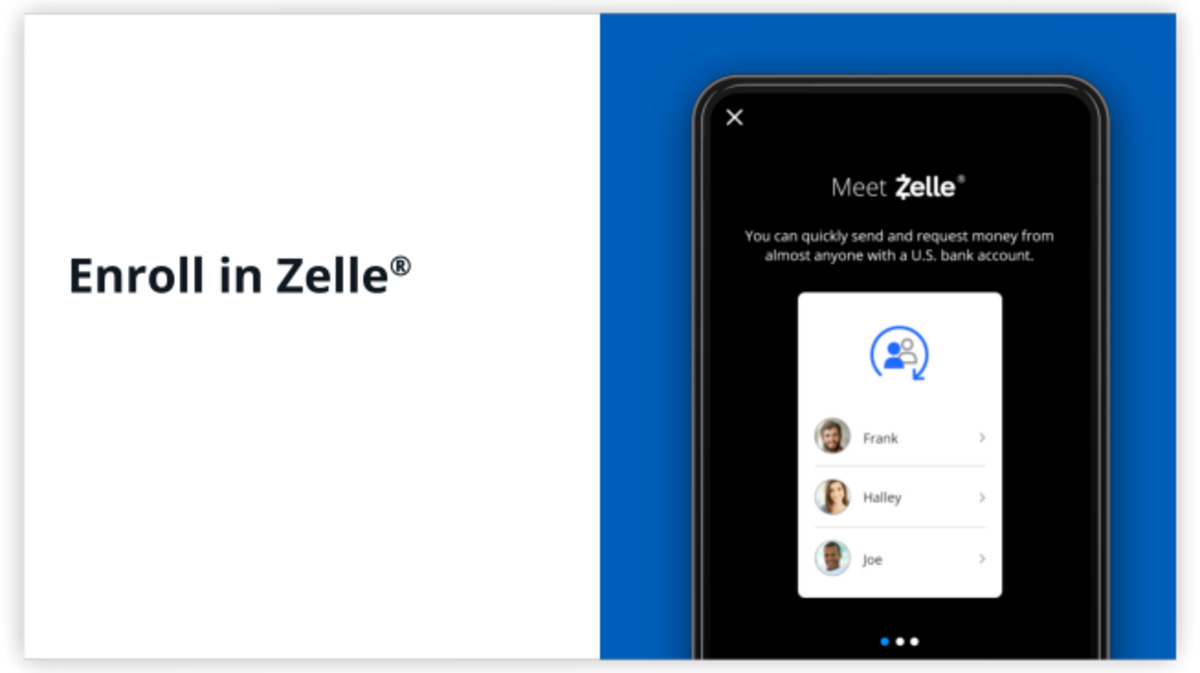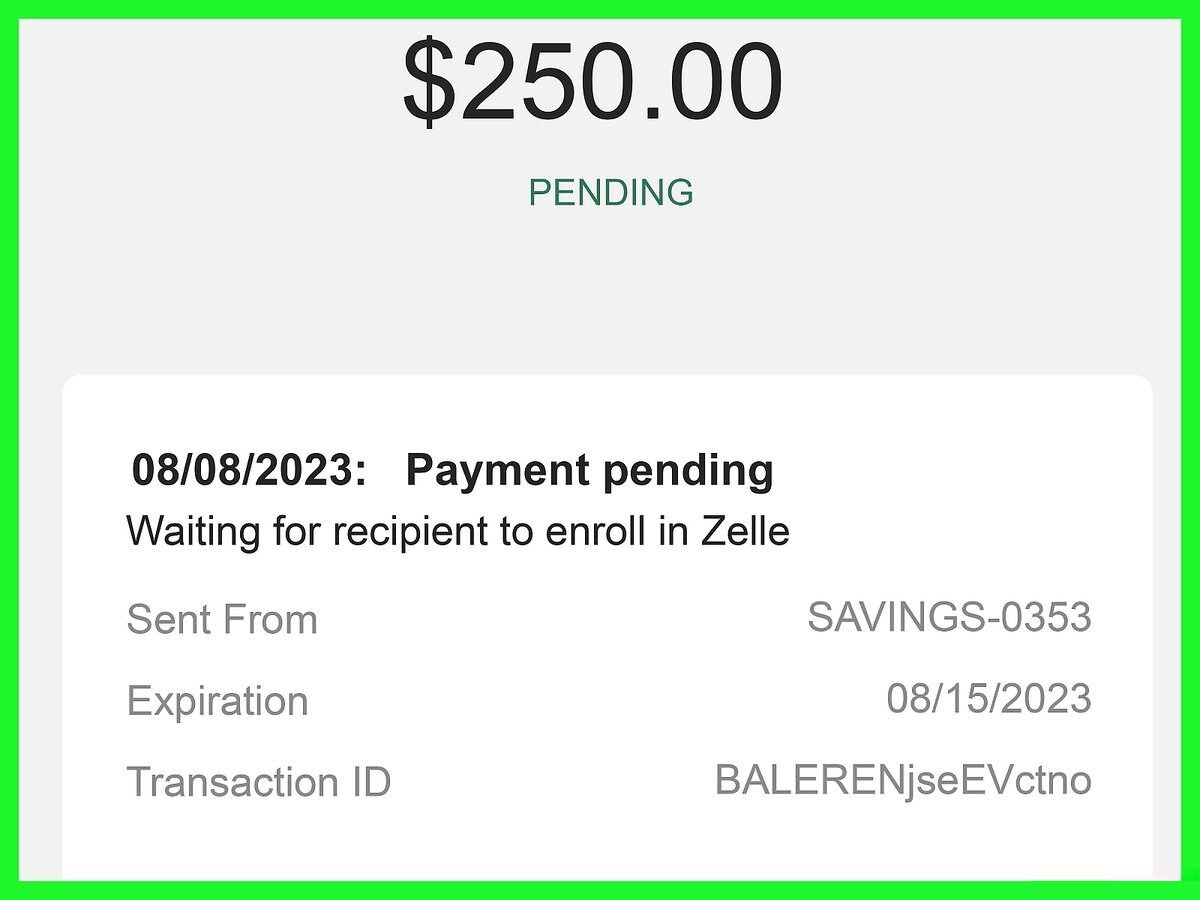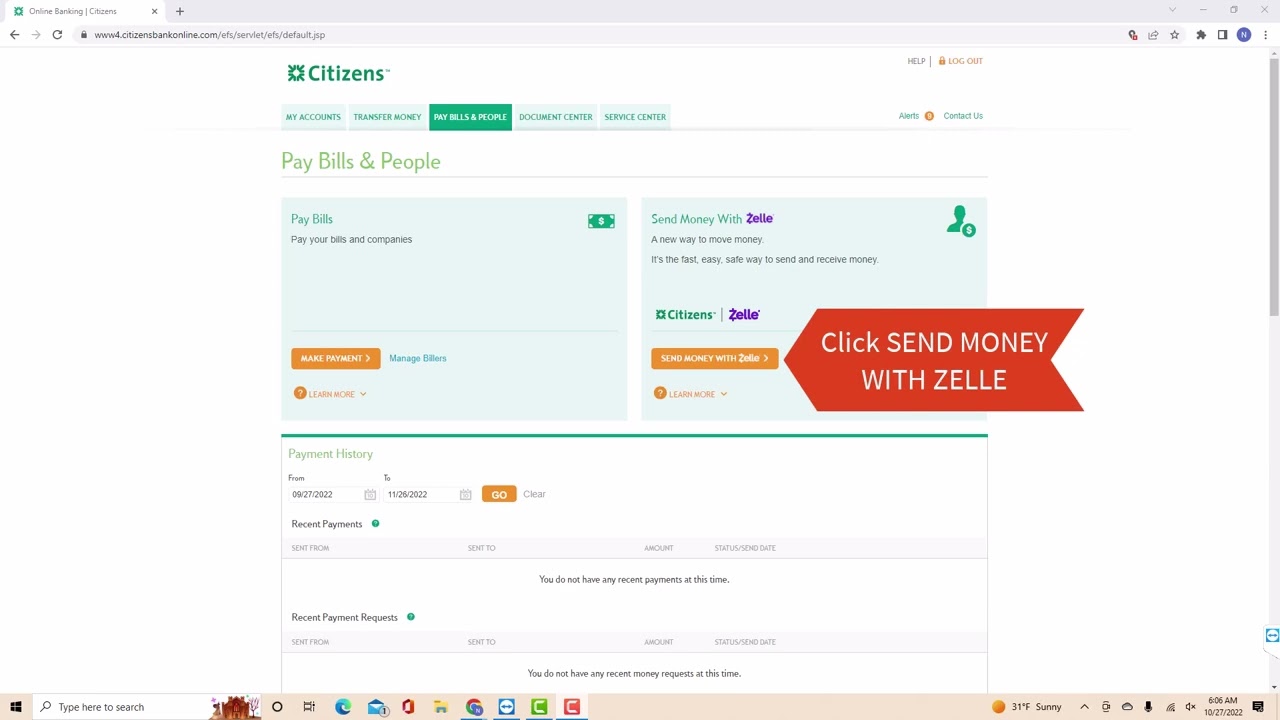What is Zelle?
Zelle is a convenient and secure way to send and receive money between friends, family, and businesses. It offers a fast and easy way to transfer funds directly from your bank account to another person’s bank account, eliminating the need for cash or checks. With Zelle, you can quickly split expenses, repay a friend, or pay for services without the hassle of carrying cash or writing checks.
Zelle is not a standalone app or online service. Instead, it is integrated into the mobile banking apps and websites of participating banks and credit unions. This means that if your bank offers Zelle, you can access it directly through your existing financial institution’s app or website, making it incredibly convenient to use.
One of the main advantages of Zelle is its real-time money transfer feature. Unlike traditional transfers, which can take several days to process, Zelle transfers happen almost instantly. This means that you can send and receive money within minutes, allowing for immediate access to funds when needed.
Another key feature of Zelle is its widespread accessibility. Since Zelle is integrated into the banking systems of many major financial institutions across the country, the chances are high that you can use it with your current bank. This eliminates the need to download additional apps or sign up for separate services, simplifying the process of sending and receiving money.
It is important to note that Zelle is designed for person-to-person transfers and should not be used for business or commercial transactions. While some businesses may accept Zelle payments, it is primarily intended for personal use among individuals.
In summary, Zelle is a convenient and fast way to send and receive money directly from your bank account. With its real-time transfer feature and widespread accessibility through participating financial institutions, Zelle offers a seamless and secure way to handle personal transactions without the need for cash or checks.
How does Zelle work?
Zelle operates on the basis of a network of participating banks and credit unions. To use Zelle, you must have a bank account with one of the participating institutions that offer the service.
When you want to send money using Zelle, you will need the recipient’s email address or phone number associated with their bank account. Once you have this information, you can initiate a transfer through your bank’s app or website. Zelle will verify if the recipient is enrolled in the service, and if so, the transfer will be completed in real-time.
If the recipient is not currently enrolled in Zelle, they will receive an invitation to sign up and create an account. Once they complete the registration process, they can access the funds you sent them. It’s important to note that both you and the recipient need to have accounts with banks that offer Zelle in order to send and receive money through the service.
One of the benefits of using Zelle is that you can send money to anyone, regardless of their bank. However, the recipient must have a bank account in order to receive the funds. Zelle cannot transfer money to non-bank accounts such as PayPal or Venmo.
Additionally, Zelle provides the option to request money from someone. If you need to collect funds from a friend or family member, you can send them a payment request through Zelle. The recipient will receive a notification and can choose to accept or decline the request.
It is important to keep in mind that while Zelle offers a convenient way to transfer money, it is crucial to enter the recipient’s information accurately. Transactions made through Zelle are typically irreversible, and if you send money to the wrong person, it may be challenging to recover the funds.
In summary, Zelle relies on a network of participating banks and credit unions to facilitate real-time money transfers. As long as both the sender and recipient have accounts with participating institutions, they can quickly and easily exchange funds using Zelle. However, it is essential to double-check recipient information to ensure accurate transactions.
Which banks offer Zelle?
Zelle is available through a wide range of banks and credit unions in the United States. Many of the major financial institutions offer Zelle as part of their online and mobile banking services, making it accessible to a large number of customers. Here are some of the prominent banks that support Zelle:
- JPMorgan Chase
- Bank of America
- Wells Fargo
- Citibank
- US Bank
- PNC Bank
- Capital One
- TD Bank
- Fifth Third Bank
- SunTrust Bank
These are just a few examples of the many banks and credit unions that have partnered with Zelle. It is important to note that while Zelle is widely available, not all financial institutions offer it. Therefore, it is recommended to check with your specific bank or credit union to confirm if they support Zelle.
In addition to the major banks, Zelle is also supported by numerous regional and community banks across the country. This widespread adoption ensures that a significant portion of the population can access and utilize Zelle for their money transfer needs.
If your bank does not currently offer Zelle, you may still have alternative options for transferring money quickly and securely. Many financial institutions provide similar services, such as Venmo, PayPal, or their own proprietary money transfer systems.
In summary, Zelle is supported by a wide array of banks and credit unions across the United States. Major financial institutions, as well as regional and community banks, offer Zelle as part of their online and mobile banking services, ensuring broad accessibility for customers.
Benefits of using Zelle
Zelle offers several benefits that make it a popular choice for individuals looking for a convenient and secure way to transfer money. Here are some of the key advantages of using Zelle:
- Speed: One of the major advantages of Zelle is its real-time transfer capability. When you send money with Zelle, it typically arrives in the recipient’s account within minutes, providing instant access to funds. This makes it ideal for situations where quick access to money is needed, such as splitting bills, paying back a friend, or handling emergency expenses.
- Convenience: Since Zelle is integrated into the existing mobile banking apps and websites of participating banks, it offers a seamless and convenient way to send and receive money. There is no need to download additional apps or sign up for separate services. You can access Zelle directly through your bank’s app or website, making the process hassle-free.
- Wide Availability: Zelle is supported by numerous banks and credit unions across the United States, making it widely accessible to a large number of customers. Whether you bank with a major financial institution or a regional bank, the chances are high that you can utilize Zelle for your money transfer needs.
- Security: Zelle prioritizes security and has implemented measures to protect users and their financial information. It uses encryption and other security protocols to safeguard your transactions and personal data. Additionally, since Zelle transfers are initiated directly through your bank, you can rely on your financial institution’s existing security measures for added peace of mind.
- Easy Setup and Use: Setting up Zelle is typically a straightforward process. If your bank offers Zelle, you can easily enroll in the service through your mobile banking app or website. Once enrolled, you can start sending and receiving money with just a few simple steps, making it user-friendly for individuals of all tech-savviness levels.
In summary, Zelle offers numerous benefits, including real-time transfers, convenience, wide availability, security, and ease of use. These advantages make Zelle an attractive option for individuals looking for a reliable and efficient way to send and receive money.
Potential downsides of Zelle
While Zelle offers many benefits, it’s important to be aware of some potential downsides when using the service. Here are a few factors that you should consider:
- Limited Dispute Resolution: Unlike credit card transactions, Zelle transfers are typically irreversible. Once you send money through Zelle, it can be challenging to recover those funds if something goes wrong or if you accidentally send money to the wrong recipient. It is crucial to double-check recipient information before initiating a transfer.
- Dependent on Bank Availability: While many banks and credit unions offer Zelle, it is not universally available. If your bank does not participate in Zelle, you may not be able to use the service. However, there are alternative money transfer options available that you can explore.
- Recipient Enrollment Requirement: In order to receive funds through Zelle, the recipient must have an account with a participating bank or credit union. If the recipient is not already enrolled in Zelle, they will need to create an account before they can access the funds you sent them. This can be an inconvenience if the recipient is not familiar with Zelle or hesitant to sign up for new services.
- Transaction Limits: Zelle imposes certain limits on the amount of money that can be sent and received within a specific period. These limits may vary depending on your bank and account type. It’s important to be aware of these limits to ensure they align with your transaction needs.
- Not for Business Use: Zelle is primarily designed for personal transfers between individuals and should not be used for commercial or business transactions. While some businesses may accept Zelle payments, it is intended for personal use. If you need to make business-related transfers, consider using alternative payment solutions specifically tailored for business transactions.
Before using Zelle, it is essential to weigh the potential downsides against the benefits and determine if it aligns with your specific needs and circumstances. Always exercise caution and double-check information before initiating any transaction to minimize the risk of errors or complications.
How to set up Zelle with your bank
Setting up Zelle with your bank is a relatively straightforward process. Here are the general steps to follow:
- Check eligibility: First, ensure that your bank or credit union offers Zelle. You can do this by visiting their website or contacting their customer service. If your bank does not support Zelle, you may need to explore alternative money transfer options.
- Enroll in online banking: If you haven’t already, enroll in online banking with your bank. This typically requires providing personal information and setting up login credentials to access your account online.
- Access the mobile app or website: Once you have enrolled in online banking, download your bank’s mobile app or access their website using a computer or mobile device.
- Log in: Open the mobile app or visit the bank’s website and log in using your online banking credentials.
- Locate Zelle: Once logged in, navigate to the section of the app or website where you can manage transfers or make payments. Look for the Zelle option or tab.
- Enroll in Zelle: Follow the prompts to enroll in Zelle. This may involve providing your email address or phone number and agreeing to the terms and conditions.
- Verify your information: In some cases, your bank may require additional verification steps to ensure the security of your account. This may involve receiving a verification code via email or text message and entering it into the app or website.
- Add your contact details: Once enrolled in Zelle, you may need to provide the phone number or email address that you want to associate with your Zelle account. This will be used to send and receive money.
- Confirm enrollment: After completing the necessary steps, you will receive confirmation that you are now enrolled in Zelle and can start using the service. You may need to close and reopen the app or refresh the website to access your Zelle account.
It’s important to note that the specific steps and process may vary slightly depending on the bank or credit union you are using. If you encounter any difficulties or have questions, reach out to your bank’s customer support for assistance.
Once you have successfully set up Zelle with your bank, you can start using the service to send and receive money conveniently and securely.
How to send money with Zelle
Sending money with Zelle is a simple process that can be completed through your bank’s mobile app or website. Here is a step-by-step guide to help you send money using Zelle:
- Access your bank’s mobile app or website: Open your bank’s mobile app on your smartphone or access their website on your computer.
- Log in: Enter your online banking credentials to log in to your account.
- Locate Zelle: Navigate to the section of the app or website where you can access Zelle. This may be labeled as “Send Money with Zelle” or a similar name.
- Select recipient: Choose the recipient to whom you want to send money. You will typically need their email address or phone number associated with their bank account.
- Enter transfer details: Enter the amount of money you want to send and any additional notes or messages you want to include with the transfer. Check the details carefully to ensure accuracy.
- Confirm and send: Review the transfer information one last time and confirm the transaction. Some banks may require additional security measures, such as confirming your identity or entering a verification code.
- Notification to recipient: Once the money is sent, the recipient will receive a notification via email or text message, depending on their preferences and settings.
- Recipient access and withdrawal: The recipient can access the funds directly through their own bank’s mobile app or website. They will typically need to link their bank account with Zelle if they haven’t done so already.
- Confirmation: Both you and the recipient will receive a confirmation once the transfer is complete. It is always a good idea to communicate with the recipient to ensure they received the funds successfully.
It’s important to note that the process may vary slightly depending on your specific bank. If you have any difficulties or questions, consult your bank’s customer support for assistance.
Using Zelle to send money offers a convenient and speedy way to transfer funds directly from your bank account to another person’s account. With just a few simple steps, you can quickly and securely send money to friends, family, or businesses.
How to receive money with Zelle
Receiving money with Zelle is a straightforward process that allows you to quickly access funds sent by friends, family, or businesses. Here’s a step-by-step guide on how to receive money using Zelle:
- Check your email or phone: When someone sends you money through Zelle, you will receive a notification via email or text message, depending on your preferred contact method.
- Click on the payment link: Open the email or message and click on the payment link provided. This will direct you to your bank’s Zelle login page.
- Log in to your bank account: Enter your online banking credentials to log in to your account. Make sure to use the same email address or phone number you have associated with your Zelle account.
- Accept the payment: After logging in, you will be directed to a page notifying you of the incoming payment. Review the payment details for accuracy and click on the option to accept the payment.
- Notify the sender: Once you have accepted the payment, it’s a good practice to notify the sender that you have received the funds. This helps ensure that both parties are aware of the successful transaction.
- Access the funds: The money will be deposited into your bank account, usually within minutes of accepting the payment through Zelle. You can access and use the funds as you would with any other money in your account.
- Confirmation: You and the sender will receive confirmation messages from Zelle and your respective banks, indicating that the transaction is complete. Keep these messages for your records.
It’s important to note that the process of receiving money with Zelle may vary slightly depending on your specific bank and their user interface. If you encounter any difficulties or have questions, reach out to your bank’s customer support for assistance.
Using Zelle to receive money offers a convenient and quick way to access funds sent by others. By following these steps, you can easily receive and manage payments through Zelle, allowing for seamless transactions with friends, family, and businesses.
Zelle fees and limits to be aware of
When using Zelle, it’s important to familiarize yourself with the fees and limits associated with the service. Here’s an overview of what you should know:
- Transaction fees: In most cases, Zelle does not charge any fees for sending or receiving money. However, it’s worth noting that individual banks may have their own policies regarding fees for certain types of accounts or transactions. It’s a good idea to check with your bank to confirm if any fees apply.
- Transaction limits: Zelle imposes limits on the amount of money you can send and receive within a specific time frame. These limits can vary depending on your bank, the type of account you have, and any specific limitations set by the Zelle service. It’s important to be aware of these limits to ensure they align with your transaction needs.
- Daily and weekly limits: Banks often have daily and weekly limits for Zelle transactions. These limits may differ between sending and receiving funds. It’s important to check with your bank to understand the specific limits that apply to your account.
- Bank account requirement: To use Zelle, you must have a bank account with a participating bank or credit union. Zelle does not directly support transfers from or to non-bank accounts, such as PayPal or Venmo. It’s important to ensure that both the sender and recipient have valid bank accounts to successfully use Zelle.
- Transaction speed: Zelle offers real-time transfers, meaning that funds are typically available to recipients within minutes. However, it’s worth noting that transfers may take longer in certain circumstances, such as transfers between different banks or if there are technical issues. It’s always a good idea to communicate with the recipient to confirm the successful transfer of funds.
These are general guidelines, and the specific fees and limits may vary depending on your bank and specific account type. It’s essential to review the terms and conditions provided by your bank for accurate and up-to-date information.
In summary, while Zelle generally does not charge fees for transactions, it is important to be aware of any potential fees and limits set by your bank. Understanding these fees and limits allows you to effectively manage your Zelle transactions and make informed choices when sending or receiving money.
Zelle’s security measures
Zelle prioritizes the security and privacy of its users’ information and transactions. Here are some of the security measures implemented by Zelle to protect its users:
- Encryption: Zelle uses industry-standard encryption to protect the transmission of data between users and financial institutions. This ensures that personal and financial information shared during transactions is encrypted and remains secure.
- Built-in Authentication: Zelle incorporates authentication mechanisms to verify the identity of users and ensure that only authorized individuals can access and use their accounts. This helps prevent unauthorized access and protects against misuse of the service.
- Bank-Grade Security: Since Zelle is integrated into the mobile banking apps and websites of participating banks, it benefits from the existing security measures adopted by those financial institutions. Banks adhere to stringent security standards and regulations to protect customer data and transactions.
- Multi-Factor Verification: Zelle supports multi-factor verification, requiring users to provide additional verification steps beyond just a username and password. This can include one-time verification codes sent via text message or email, adding an extra layer of security to account access.
- Fraud Protection: Zelle continuously monitors transactions for potential fraudulent activity. If any suspicious activity is detected, Zelle may take immediate action to investigate and prevent further fraudulent transactions.
- Privacy Protections: Zelle maintains strict privacy policies and practices to protect user data. Personal and financial information shared during transactions is securely stored and handled in accordance with privacy regulations and best practices.
While Zelle has implemented robust security measures, it’s important for users to also take precautions to safeguard their accounts. This can include regularly updating passwords, enabling two-factor authentication if available, and exercising caution when sharing personal or financial information online.
Remember, no system is entirely immune to security risks, and individuals should remain vigilant and report any suspicious activity to their financial institution or to Zelle directly.
Zelle’s commitment to security and its collaboration with participating banks and credit unions help ensure that users can confidently send and receive money through the service, knowing that their information is protected.
Common issues and troubleshooting tips with Zelle
While Zelle is designed to provide a smooth and reliable money transfer experience, it’s possible to encounter certain issues. Here are some common issues that users may face when using Zelle and some helpful troubleshooting tips:
- Recipient not enrolled: If you attempt to send money to someone who has not enrolled in Zelle, they will need to sign up for the service before they can receive the funds. Advise them to check their email or text messages for an invitation to enroll in Zelle.
- Incorrect recipient information: It’s crucial to double-check the recipient’s email address or phone number before initiating a transfer. Sending money to the wrong recipient can be challenging to recover. Review the transaction details carefully to ensure accuracy.
- Transaction delays: While Zelle transactions are typically instant, there may be occasional delays due to various factors such as network issues or verification requirements. If you experience a delay, contact your bank’s customer service for further assistance.
- Transaction limits reached: Zelle imposes certain limits on the amount of money that can be sent and received within a specific timeframe. If you encounter a transaction limit, you may need to wait for the limit to reset or consider alternative payment methods for larger transactions.
- Device or app issues: If you encounter problems accessing Zelle through your mobile app or website, try clearing your cache and updating the app to the latest version. If the issue persists, contact your bank’s technical support team for guidance.
- Fraudulent activity: In the unfortunate event of fraudulent activity, such as unauthorized transactions or suspicious account access, contact your bank immediately to report the issue. They will guide you on the necessary steps to secure your account and resolve the situation.
If you experience any issues or have questions regarding Zelle, it’s best to reach out to your bank’s customer support. They can provide specific guidance and assist you in resolving any problems you may encounter.
Remember to always double-check information, communicate with the recipient to confirm successful transactions, and remain vigilant when it comes to the security of your Zelle account.
By being aware of these common issues and following the troubleshooting tips, you can minimize disruptions and enjoy a smoother experience when using Zelle for your money transfer needs.
Alternatives to Zelle
While Zelle is a widely-used and convenient money transfer service, there are alternative platforms available that offer similar functionality. Here are a few popular alternatives to consider:
- Venmo: Venmo is a popular peer-to-peer payment service that allows users to send and receive money from friends and family. It offers social features, such as the ability to share payment details and split expenses, making it a convenient option for casual transactions.
- PayPal: PayPal is a well-established and widely-recognized online payment platform. It enables users to send and receive money domestically and internationally, and it also offers additional features like online shopping, seller protection, and business payment solutions.
- Cash App: Cash App, also known as Square Cash, is a mobile payment service that allows users to send and receive money directly from their bank account or using the Cash App balance. It offers features like peer-to-peer transfers, direct deposit, and cryptocurrency trading.
- Google Pay: Google Pay is a digital wallet platform that allows users to pay for purchases, send and receive money, and store payment information securely. It integrates with your Google account and offers additional features like loyalty card management and contactless payment options.
- Apple Pay: Apple Pay is a mobile payment and digital wallet service provided by Apple. It allows users to make secure payments using their iPhone, iPad, Apple Watch, or Mac. Apple Pay can be used for in-person transactions, online purchases, and person-to-person transfers.
These alternative platforms provide similar services to Zelle, but each has its own unique features and user experience. It’s important to review the specific terms, fees, and availability of these platforms to determine which option best suits your needs.
Additionally, many banks offer their own proprietary money transfer services or have partnerships with other payment providers. These services may offer similar functionality to Zelle but may have specific advantages or limitations depending on your bank and account type.
When evaluating alternatives to Zelle, consider factors such as transfer fees, transaction limits, speed of transfers, security measures, and ease of use. It’s also important to ensure that the person you want to send money to is also using the chosen alternative platform.
By exploring these alternative options, you can find a money transfer service that best aligns with your preferences and needs, providing a seamless and convenient way to send and receive funds.







